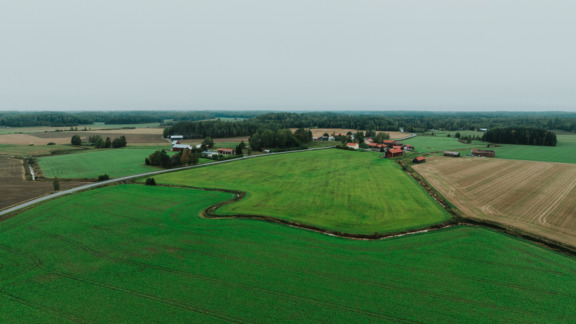The Baltic Sea is special to all of us – to shipping, too
According to international regulations, the Baltic Sea is a special and particularly sensitive sea. Maritime activities in the Baltic Sea are more stringently regulated than activities in many other sea areas in the world. Incentives encourage practices that protect the sensitive maritime environment.
Every year, about 35,000 port calls are made in Finnish ports. Ships carry industrial products and raw materials, but also consumer goods, medicines, vehicles, and passengers. At ports, ships discharge various types of waste. All waste that has been generated on the ship and which cannot legally be discharged into the sea must be delivered to port reception facilities. It is, of course, forbidden to dump for example oily waste, metal, or plastic in the sea. Some types of waste, such as grey waters, treated sewage or ground food waste, can under certain conditions be legally pumped into the sea.
Responsible waste management is incentivized
To encourage ships to discharge all their waste at ports, a so called No Special Fee system applies in the Baltic Sea ports. Under the NSF system, ships are charged a waste fee at ports even if no waste is left to port reception facilities. The waste fee covers the disposal of oily waste, sewage, and garbage. Since there is no extra cost for these types of waste, the system incentivizes ships and shipping companies to take advantage of the port reception facilities.
However, the system works as designed only if the ships make use of it. BSAG and several members of Shipbrokers Finland conducted a survey looking into waste disposal practices of ships. The survey revealed that one third of cargo ships calling at Finnish ports were not aware of the NSF system. The more seafarers wrongly assume that they must pay extra to discharge for example sewage to port reception facilities, the more likely they are to pump them into the sea. This is bad news for the Baltic Sea. Discharges of grey water, treated sewage, and food waste accelerate eutrophication and oxygen depletion which are the worst problems of the Baltic Sea.
It is crucial to address the problem to lighten the environmental burden especially from the waste types which can be legally discharged into the sea. For example, sewage can be pumped into the sea if ship’s treatment plant has sufficiently removed, among other things, suspended solids or fecal coliforms.
The ship survey highlighted information gaps
Based on the results of the ship survey, it is clear that seafarers need to be made aware of the special circumstances in the Baltic Sea and responsible waste management onboard. Vessels sailing in regular shipping lines as well as ferries sailing between Finland and Sweden and Finland and Estonia already leave all their waste ashore. By contrast, the majority of cargo ships reported that they had discharged ground food waste, treated sewage or grey waters into the sea en route to Finnish ports.
BSAG invited authorities and organizations of the Finnish maritime cluster to draw up an information package to be delivered to ships. The package will provide crews with information regarding the NSF system and waste management arrangements at each port, as well as of responsible treatment of the types of waste that can be legally pumped into the sea.
The Finnish action plan for marine environment management 2022–2027 strives to decrease marine litter and increase information flows between ports, ships, shipbrokers, and authorities. The information package, idea generated by BSAG, is a step in reaching this goal.
Cooperation generates a great information package
All discharges matter when it comes to the state of the sea. Although the volume discharged from a single ship would be small, the potential effect of discharges from the 2000 cargo ships sailing daily in the Baltic Sea is large. All discharges increasing eutrophication are detrimental.
It is vital that the ship crews know the practices, pricing principles, and required pumping capacities at each port. The information package enables the crews to easily find out which types of waste the compulsory fee covers, and which types require additional payments. The package will include some port specific information and a link to the port’s websites where detailed information can be found. The information package describes the special features and problems of the Baltic Sea and everyone interested is directed to MarineFinland.fi to learn more.
Reaching vessels coming from outside the Baltic Sea and informing the crews of the special features of the Baltic Sea and the NSF system is crucial. Shipbrokers play a decisive role as they act as a link between ships, shipping companies and ports. The information package will be delivered to ships by shipbrokers who coordinate the waste disposal at ports. Starting soon, the package will be distributed to cargo ships heading to Finnish ports. The information package will be available on the ports’ websites, too.
The parties active in compiling the information package include Finnish Port Association, Shipbrokers Finland, Finnish Shipowners’ Association, Finnish Transport and Communications Agency, Ministry of Transport and Communications, and Ministry of the Environment. Baltic Sea Action Group thanks everyone for their commitment and input in compiling the information package – together we can make change happen!
Elisa Mikkolainen
Project Director, Marine Traffic
Baltic Sea Action Group

BSAG’s two year Grey waters in maritime traffic -project receives funding from the European Maritime and Fisheries Fund’s Finnish Operational Program 2014–2020.



